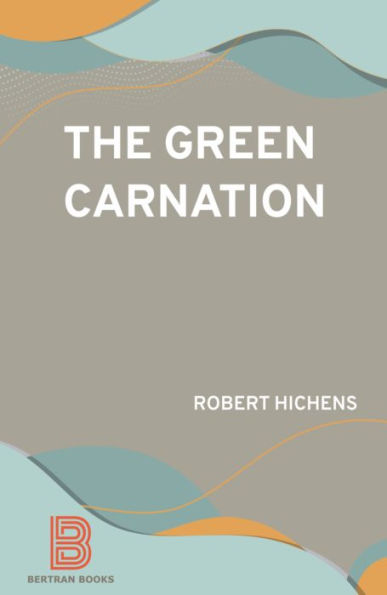In the opening scene, Lord Reggie Hastings slips a green carnation into his evening coat before attending a dinner party at Belgrave Square. He converses with Mr. Esmé Amarinth, a married playwright; and Lady Locke, a young widow.
Some days later, Lord Reggie, Lady Locke, and Amarinth are guests at Mrs. Windsor's home in Surrey. Lady Locke is initially attracted by Lord Reggie, but becomes increasingly disturbed by his wearing of the green carnation and what it symbolises about his attitude to life. Lord Reggie tells her that Esmé invented the flower, and that it is only worn by a few people who are followers of "the higher philosophy".
Lord Reggie has no inclination to marry, but he decides that the good natured and wealthy Lady Locke would make him a useful wife. Yet although she is still fond of the gentleman, she has realised their incompatibility. At the end of the novel, she firmly rejects his proposal, telling Lord Reggie that he should never ask another woman to marry him so long as he wears a green carnation.
Lady Locke then decides to take her young son Tommy to the seaside; whilst Lord Reggie and Amarinth return to London together.
1100154118
Some days later, Lord Reggie, Lady Locke, and Amarinth are guests at Mrs. Windsor's home in Surrey. Lady Locke is initially attracted by Lord Reggie, but becomes increasingly disturbed by his wearing of the green carnation and what it symbolises about his attitude to life. Lord Reggie tells her that Esmé invented the flower, and that it is only worn by a few people who are followers of "the higher philosophy".
Lord Reggie has no inclination to marry, but he decides that the good natured and wealthy Lady Locke would make him a useful wife. Yet although she is still fond of the gentleman, she has realised their incompatibility. At the end of the novel, she firmly rejects his proposal, telling Lord Reggie that he should never ask another woman to marry him so long as he wears a green carnation.
Lady Locke then decides to take her young son Tommy to the seaside; whilst Lord Reggie and Amarinth return to London together.
The Green Carnation
In the opening scene, Lord Reggie Hastings slips a green carnation into his evening coat before attending a dinner party at Belgrave Square. He converses with Mr. Esmé Amarinth, a married playwright; and Lady Locke, a young widow.
Some days later, Lord Reggie, Lady Locke, and Amarinth are guests at Mrs. Windsor's home in Surrey. Lady Locke is initially attracted by Lord Reggie, but becomes increasingly disturbed by his wearing of the green carnation and what it symbolises about his attitude to life. Lord Reggie tells her that Esmé invented the flower, and that it is only worn by a few people who are followers of "the higher philosophy".
Lord Reggie has no inclination to marry, but he decides that the good natured and wealthy Lady Locke would make him a useful wife. Yet although she is still fond of the gentleman, she has realised their incompatibility. At the end of the novel, she firmly rejects his proposal, telling Lord Reggie that he should never ask another woman to marry him so long as he wears a green carnation.
Lady Locke then decides to take her young son Tommy to the seaside; whilst Lord Reggie and Amarinth return to London together.
Some days later, Lord Reggie, Lady Locke, and Amarinth are guests at Mrs. Windsor's home in Surrey. Lady Locke is initially attracted by Lord Reggie, but becomes increasingly disturbed by his wearing of the green carnation and what it symbolises about his attitude to life. Lord Reggie tells her that Esmé invented the flower, and that it is only worn by a few people who are followers of "the higher philosophy".
Lord Reggie has no inclination to marry, but he decides that the good natured and wealthy Lady Locke would make him a useful wife. Yet although she is still fond of the gentleman, she has realised their incompatibility. At the end of the novel, she firmly rejects his proposal, telling Lord Reggie that he should never ask another woman to marry him so long as he wears a green carnation.
Lady Locke then decides to take her young son Tommy to the seaside; whilst Lord Reggie and Amarinth return to London together.
2.99
In Stock
5
1

The Green Carnation

The Green Carnation
Related collections and offers
2.99
In Stock

Product Details
| BN ID: | 2940162435846 |
|---|---|
| Publisher: | Bertran Books |
| Publication date: | 08/27/2021 |
| Sold by: | Barnes & Noble |
| Format: | eBook |
| File size: | 404 KB |
About the Author
From the B&N Reads Blog
